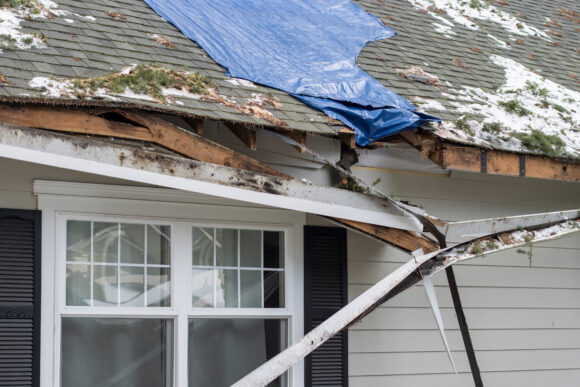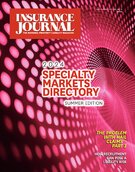My previous two columns (May and June 2024) addressed issues with hail and windstorm claims regarding the discovery and reporting of damage, actual cash value versus replacement cost valuation and 180-day reporting conditions, percentage deductibles, special cosmetic damage limitations, and “marring” exclusions.
In this third and final “hail claims” installment, we’ll address matching issues, Pair Or Set clauses, suits against insurers, and examine potential solutions to rising frequency and/or severity of claims as opposed to simply increasing premiums and/or reducing coverage.
Matching Issues
Perhaps few issues are so consistently perplexing to both the insurance industry and insurance consumers than property damage that results, if repaired, in a mismatch between the new construction and existing undamaged property. Most often, in the case of wind or hailstorms, these claims arise from damage to asphalt shingles or vinyl siding.
Under most property policies, coverage is provided only for repair or replacement of damaged material, regardless of whether such repair or replacement results in a mismatch in appearance, something often cited as an economic loss, not a direct physical loss. To make it absolutely clear, a number of carriers have introduced “Unmatched Property Damage Exclusion” endorsements under various names.
In addition, some states have extracontractual statutes or case law governing the matching issue. Case law generally points to finding coverage to the benefit of the insured if there is an ambiguity as to whether repaired or replaced property must match existing undamaged property. Where such case law governs, if the policy is not ambiguous, the ability of the insurer to deny coverage for diminished value might prevail.
In the states where this issue has been addressed by statute, there is usually a requirement that the insurer replace as much of the property as is necessary to result in a reasonably uniform appearance across contiguous or adjoining areas or within the same line of sight.
One such resource for this information is available from the law firm Matthiesen, Wickert & Lehrer, S.C. (www.mwl-law.com) in a document entitled “‘Matching Regulations’ and Laws Affecting Homeowners’ Property Claims in All 50 States.”
Pair Or Set Clauses
In the state where I live, a matching statute became effective in the fall of 2017. Prior to that time, the matching issue was only indirectly addressed by tenuous case law based on whether insurance contract language was ambiguous. If it wasn’t, then the insurer was not obligated to repair or replace damaged property such that the finished work and undamaged property matched.
That being said, a number of carriers did repair property in a manner that did not result in a mismatch in appearance. As I’ve written on many occasions, insurance is not a commodity differentiated solely by price. A carrier’s claim practices are just as important as the actual contract language and almost always more important than price alone.
But, getting back to the point of this discussion, in 2013 our home was damaged by an EF0 tornado. Fortunately, we did not need a new roof but we did lose six-to-eight out of 26 shutters on the front of the house. We live in an older house with a number of custom features, including oddly sized windows and shutters. In other words, the missing and damaged shutters could not be replaced by shutters routinely found at local home improvement stores.
While, arguably, our homeowners policy did not cover uniform matching, I was able to get all 26 shutters replaced by invoking the policy’s “Pair Or Set” clause, which covered repair or replacement of any or all parts of a set. I argued that the shutters were a “set,” a term undefined in the policy and, at worst, ambiguous, and the adjuster agreed to replace all 26 shutters.
In addition, while most Pair Or Set clauses are based on an ACV recovery, our policy afforded coverage on a replacement cost basis, again illustrating that insurance is not a commodity. Coverage matters. Accommodating claims practices matter.
Suits Against Us
In my May column I raised the issue of when does an occurrence take place and what are the reporting requirements in order for the policy to respond to the claim when made? Similarly, what if the claim is denied and the insured wants to sue the insurer? Here is an excerpt from the current ISO HO 00 03 form’s “Suit Against Us” policy condition:
“No action can be brought against us unless … the action is started within two years after the date of loss.”
Some non-ISO policies are even more restrictive — one limiting the time frame to file a lawsuit to one year following loss and only if the loss has been reported within six months. Needless to say, these limitations give rise to many questions about various coverage trigger theories plus factual issues about when, why, and how damage occurred that led to, for example, a roof leak.
As discussed in my May column, one possible solution is to follow a change ISO made in their homeowners forms dealing with “repeated seepage and leakage” claims. For these claims, if the damage is not readily apparent until it becomes obvious, something akin to a manifestation theory is followed and coverage is provided as long as the discovery of the damage is reported promptly.
Other Solutions?
Aside from a few points I’ve made in this series of articles, such as the application of a manifestation theory of loss discovery, there are other possible solutions that could merit a separate series of articles. The obvious one is to approach these claims from a loss control standpoint by employing superior construction practices, either by building code enhancements or at least voluntary insurance coverage options. Roof systems that are far more resistant to wind and hail damage exist right now, if consumers are willing to pay for them through increased construction and insurance costs.
What do you think? Feel free to respond with a comment.
Topics Claims
Was this article valuable?
Here are more articles you may enjoy.



 More Floridians Moving Out Due to Housing, Insurance Costs, Cotality Report Says
More Floridians Moving Out Due to Housing, Insurance Costs, Cotality Report Says  Florida Bill Advances, Would End Board of Engineers, Other Professional Agencies
Florida Bill Advances, Would End Board of Engineers, Other Professional Agencies  Markel Insurance Restructures Markel Specialty, Appoints Leaders
Markel Insurance Restructures Markel Specialty, Appoints Leaders  Don’t Forget Tariff Impacts on Workers’ Compensation: Berkley
Don’t Forget Tariff Impacts on Workers’ Compensation: Berkley 



